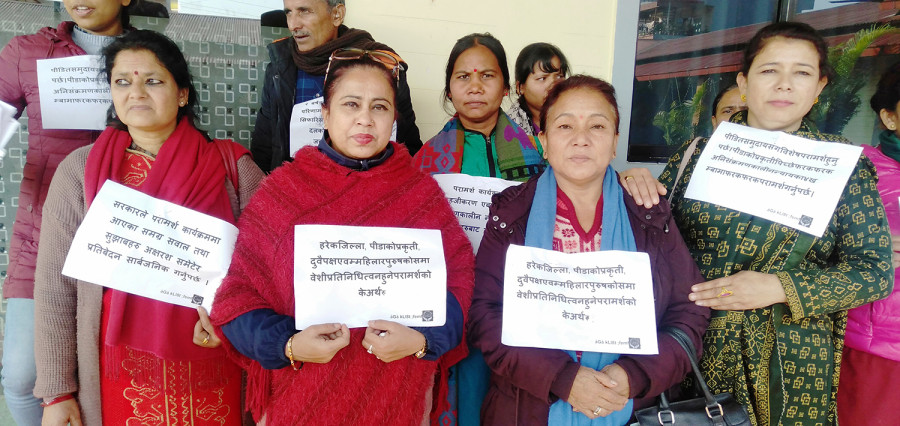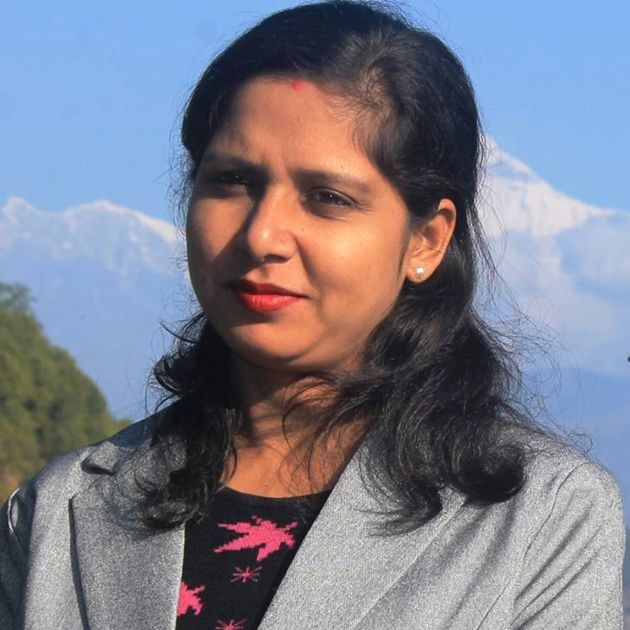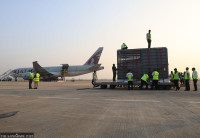Lumbini Province
Children of conflict victims deprived of scholarship provided by the state
Conflict victims demand an amendment to the act and removal of the age and number limit for the scholarship.
Amrita Anmol
Ajuri Lodh, 45, of Rayapur in Rupandehi lost her husband, Shyam Sundar, to the decade-long armed insurgency that took place between 1996 to 2006. She was left with five children who are now in their teens; her oldest is 18 and the youngest 14.
For Lodh, sending her children to school has always been a priority but the help the state extends to families of conflict victims does not cover education expenses for all her five children.
“The state provides scholarships to a maximum of three children per couple,” she said. “My two younger children are not eligible for the scholarship provided by the government.”
Under the government’s scholarship scheme, a child of a conflict-era victim studying in the primary level receives Rs 10,000 annually while those in the lower secondary, secondary and higher secondary receive Rs 12,000; 14,000 and 16,000 respectively.
According to the data available at the District Administration Office in Rupandehi, there are a total of 532 children of conflict victims in the district. The authority said that nearly 50 of them are deprived of the government scholarship.
As per the Enforced Disappearances Enquiry, Truth and Reconciliation Commission Act 2014, a child of a conflict victim receives the government’s scholarship amount until he or she turns 18. However, in most cases, higher education begins at 18.
“I am 15 years old and study in grade 9. I will turn 18 before I reach grade 12, after which I’ll be disqualified for the scholarship,” said Rajib Kafle, whose father was killed during the conflict. “I see no hope for my future if I have to discontinue my formal education.”
At a discourse programme on the government’s plan to amend the scholarship provision under the Enforced Disappearances Enquiry, Truth and Reconciliation Commission Act 2014, conflict victims demanded the removal of the age limit and the number of children eligible for the scholarship.
“The existing laws in the country do not have any provisions regarding the number of children one can bear, so the number limit for the scholarship makes no sense. The prevailing provision for the scholarship is an injustice to large families,” said Urmila Kunwar, who also lost her husband in the conflict.
Hari Singh Dhami, the undersecretary at the provincial Ministry of Internal Affairs and Law, admits that there are legal hurdles stopping some children of conflict-era victims from receiving scholarships.
“We have recommended the authorities to address the problem while amending the act,” said Dhami.
The wives of disappeared people have also complained that the act is not “conflict-victim friendly”. Many of these women claim that they have not received the allowance meant for single women, as the state does not recognise the wives of disappeared people as single women.
“We are under tremendous financial pressure; we are left with children and the state has done little to support us. The act should be amended so that we can also be eligible to get the allowance for single women,” said Dhana Chaudhary of Shuddodhan.
Province 5 was hit hardest by the armed insurgency. A total of 3,221 people from 12 districts of the province were killed while 712 were disappeared and 94 others were maimed. As many as 805 people were killed in Rolpa alone, the epicentre of the armed conflict.



 16.12°C Kathmandu
16.12°C Kathmandu












